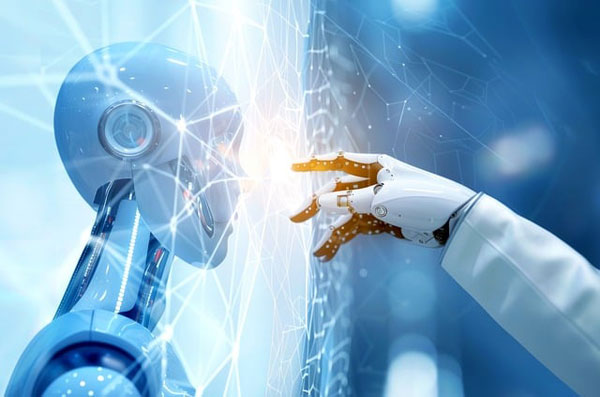Tesla’s humanoid robot ‘Optimus’ takes a step toward domestic AI helpers

[AI robot hand touch. Photo Credit to Pixabay]
In a video released by Tesla on the social media platform X (formerly Twitter) on May 21, the company’s humanoid robot, Optimus, demonstrated its ability to perform tasks that require more than repetition, such as sorting laundry and organizing items on a table.
The video shows Optimus picking up pieces of laundry and placing them neatly into a basket.
The robot is also capable of recognizing and arranging scattered objects on a table with remarkable precision.
This marks a notable advancement in the robot’s ability to handle irregular objects and perform in dynamic environments, highlighting a leap forward from earlier industrial-focused robotics.
Optimus is built with 28 degrees of freedom across its joints, a high-resolution vision system, and custom-designed electric actuators developed by Tesla.
These physical capabilities allow for fluid, human-like movements.
When combined with its advanced machine learning control, the robot can perform practical tasks even in unpredictable settings.
A standout feature in Optimus’ development is its learning method, known as the video-based self-supervised learning.
According to Tesla engineers, the robot can now learn directly from online videos of humans performing tasks using this newly adapted technique.
Instead of following pre-programmed instructions, Optimus watches human actions, understands the intent, and reproduces the behavior through its own movement.
This development signals a major breakthrough in robot autonomy.
Tesla CEO Elon Musk emphasized the significance of this demonstration, stating that Optimus represents “genuinely useful humanoid robots in low production for Tesla internal use next year.”
He also added that mass production of Optimus could begin within a few years, with the potential for it to be priced lower than an electric car.
The robot is estimated to be priced between $20,000 and $30,000.
As Optimus progresses toward commercial availability, its applications are expected to expand beyond industrial use to a variety of sectors.
In households, the robot could help with cleaning, meal preparation, and even provide support for childcare.
In healthcare and eldercare settings, Optimus could take on repetitive support tasks like fetching items or helping with light caregiving, easing the burden on human staff.
Tesla has already begun testing Optimus in select roles within its own factories.
With its increasing functionality and adaptability, humanoid robots are no longer a concept from science fiction, but are rapidly becoming a reality.
This latest demonstration hints that a future with humanoid robots in homes, hospitals, and beyond may soon arrive.
With that being said, while many view the expansive capability of Optimus through video-based learning as an important advancement, it may also raise concerns among workers in particular industries.
As technology continues to evolve at an unprecedented pace, the implications of such innovations are both promising and uncertain.

- Seungmin Shin / Grade 10
- North London Collegiate School Jeju

![THE HERALD STUDENT REPORTERS [US]](/assets/images/logo_student_us.png)
![THE HERALD STUDENT REPORTERS [Canada]](/assets/images/logo_student_ca.png)
